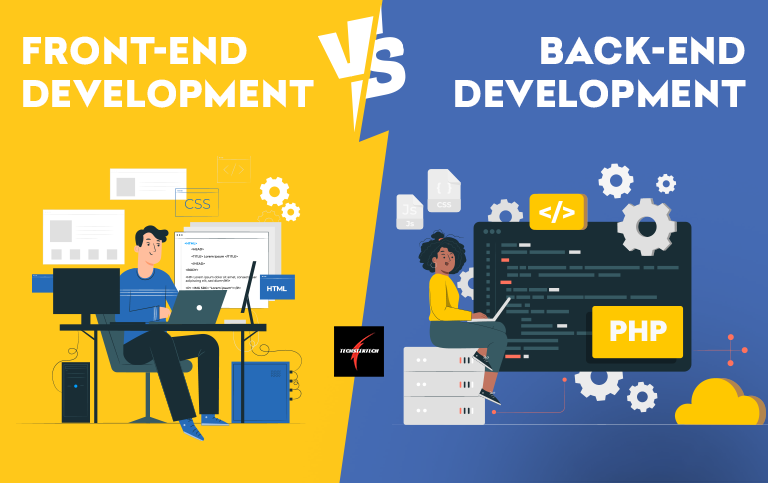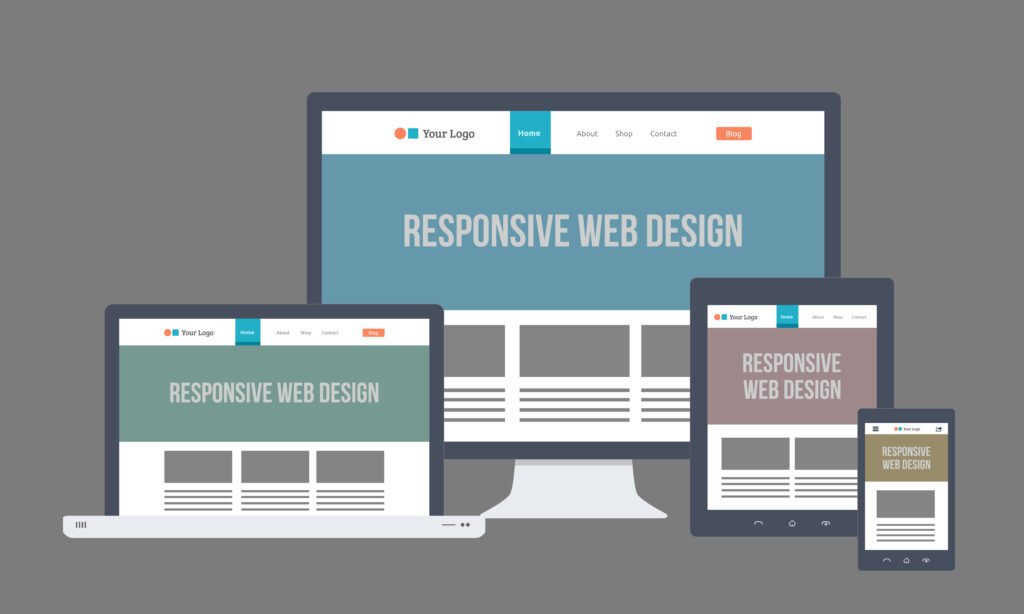Web development can broadly be classified into two categories: frontend development and backend development. Both are crucial for creating a fully functional website or application, but they involve distinct skill sets, technologies, and responsibilities.
In this blog post, we will dive into the key differences between frontend and backend development, their roles in web development, and the tools used by developers in each field.
What is Frontend Development?
Frontend development, also known as client-side development, is everything that users interact with on a website or web application. It deals with the design, layout, and structure of the website that is directly visible to users. Frontend developers are responsible for implementing the user interface (UI) and ensuring that the website is responsive, user-friendly, and accessible.
Key Responsibilities of Frontend Developers:
- Creating and optimizing user interfaces (UI)
- Implementing responsive web designs (mobile-first designs)
- Ensuring cross-browser compatibility
- Enhancing user experience (UX) by working closely with designers
- Working with front-end frameworks and libraries to streamline development
Popular Frontend Technologies:
- HTML (HyperText Markup Language): The structure and content of the webpage.
- CSS (Cascading Style Sheets): The design, layout, and styling of the webpage.
- JavaScript: Adds interactivity, animations, and dynamic content to the website.
- Frontend Frameworks and Libraries:
- React.js: A JavaScript library for building user interfaces, often used for building Single Page Applications (SPA).
- Vue.js: A lightweight and flexible JavaScript framework.
- Angular: A full-featured JavaScript framework used for building large-scale web applications.
- Bootstrap: A CSS framework used for developing responsive and mobile-first websites.
What is Backend Development?
Backend development, also known as server-side development, focuses on what happens behind the scenes. It involves managing databases, server logic, and ensuring the smooth communication between the frontend and the database or server. Backend developers create the logic and functionality that powers the application, including authentication, data processing, and server-side scripts.
Key Responsibilities of Backend Developers:
- Building and managing databases to store and retrieve data
- Implementing server-side logic and business rules
- Integrating APIs and web services
- Ensuring website or app security and data protection
- Optimizing server performance and load management
- Handling server hosting, deployment, and scalability
Popular Backend Technologies:
- Programming Languages:
- Node.js: JavaScript runtime used for server-side scripting.
- Python: Known for its simplicity and used in frameworks like Django and Flask.
- PHP: Widely used for building dynamic websites and web applications.
- Java: A powerful, cross-platform language often used for large enterprise applications.
- Ruby: Known for its simplicity and used with Ruby on Rails for web development.
- Databases:
- SQL Databases: MySQL, PostgreSQL, and Microsoft SQL Server.
- NoSQL Databases: MongoDB, Cassandra, and Firebase for more scalable data storage solutions.
- Backend Frameworks:
- Express.js: A minimal Node.js framework for building web applications.
- Django: A Python-based web framework known for rapid development.
- Ruby on Rails: A full-stack web framework for Ruby.
- Spring Boot: A Java-based framework used for building microservices and enterprise applications.
Key Differences Between Frontend and Backend Development
| Aspect | Frontend Development | Backend Development |
|---|---|---|
| Focus Area | Client-side (User Interface) | Server-side (Database, Server Logic) |
| Languages/Technologies | HTML, CSS, JavaScript, React, Vue, Angular | Python, Node.js, Java, PHP, Ruby |
| Main Objective | Building and styling the user interface (UI) | Ensuring application functionality and logic |
| User Interaction | Directly interacts with the user | Does not interact with the user directly |
| Frameworks/Libraries | React, Vue.js, Bootstrap, Angular | Django, Express.js, Ruby on Rails, Spring |
| Main Concerns | User experience, design, responsiveness | Data handling, security, server performance |
| Databases | Not involved | Responsible for database management |
| API Usage | Consumes APIs for data | Builds and provides APIs |
| Examples of Tools | Chrome Developer Tools, Figma, Adobe XD | Postman, Docker, AWS, Jenkins |
Conclusion
While frontend development is all about creating a visually appealing and user-friendly interface, backend development focuses on the behind-the-scenes functionality that makes websites and web applications work smoothly. Both are essential to delivering a seamless user experience and ensuring the website performs reliably.
Whether you’re planning a new website or enhancing an existing one, TechsterTech.com specializes in full-stack web development, offering expertise in both frontend and backend technologies. We can help you design, build, and maintain a website tailored to your specific needs.



